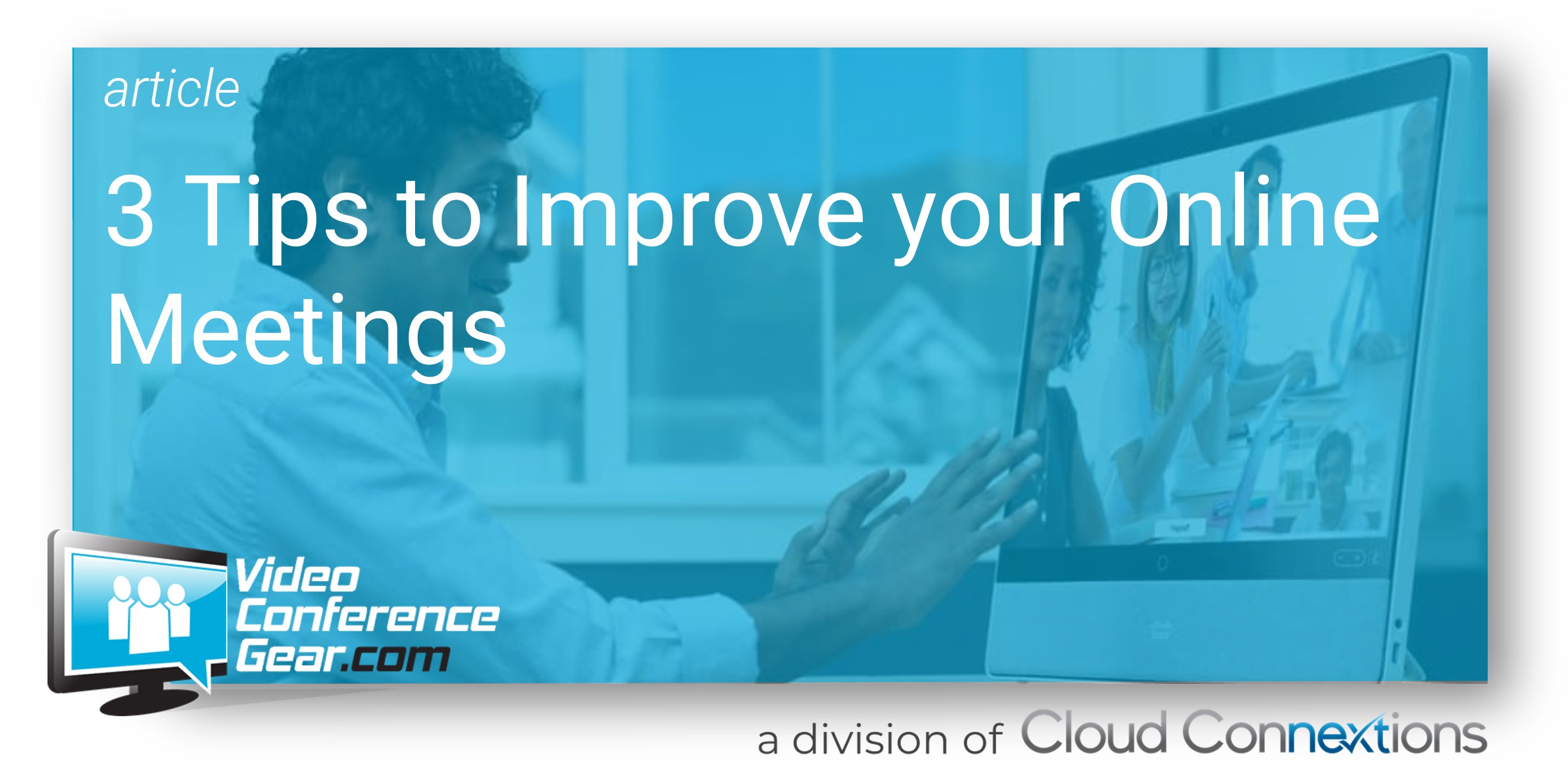Improve your video conferencing and online meetings
Posted by Video Conference Gear on 3/28/2023

We've all been there: the meeting that was supposed to be a quick check-in ends up being an hour long and full of distractions. The video conference is lagging, the audio quality is terrible, and all you want to do is get out of there.
There is a difference between meeting in-person or online, and with so many people working from a home office (either full or part-time), it's important to make sure those online meetings reap all the benefits of an in-person meeting. Video Conferencing has made it easier, but most of us have been involved in video meetings (or attended an online webinar) that proves we still have a long way to go in making those meetings perfect. Cameras, Audio, Screen Sharing, etc. are easy, but if done wrong, they can be also be distracting. In some instances, the meeting would have been better if it was just a phone call, rather than a video call.
Since we specialize in video conferencing, and have an opportunity to not only see, but use a wide range of products—not just ours—we thought we could share some of our tips for having better meetings:
1. Focus on the Meeting
Meetings are essential to productivity, but they can also be a source of distraction. It's so easy to get distracted during meetings, and try to do something that is not exactly related to the meeting. Don't do it. It's better to have a 15-minute meeting, discussing/deciding on something, than have a 1-hour meeting where you or someone else on the video call is distracted the majority of the time.
This is especially true if you are working from home - if you know there is going to be significant distractions during parts of your day (the dog always barks at the mailman, or kids come home from school at 3), plan around those times. And if the video conference meeting is in a huddle space or conference rooms, be careful shuffling those papers, or anything else that causes noise - it's much more distracting for the people on the other side of the camera.
2. Get to know your technology
Meetings are a great way to get work done, but they can also go wrong in a hurry. One of the most common ways that meetings go wrong is because of the technology we use to run them. It's easy to forget that video conferencing isn't as simple as making a phone call, and if something goes wrong, it might be hard to fix. If you're organizing a meeting, or attending one, here are some tips for keeping things running smoothly:
Reboot your computer - sometimes we get so used to having our computers on 24/7 that we forget they've loaded a dozen applications and thousands of websites. Video conferencing applications are resource hogs - even though they usually "play nice," it's never a bad idea to give your computer a refresh before starting your meeting.
Have a backup plan - what if something goes wrong with your technology setup, and you can't get anything working? That's why having thought through a backup is important. If you normally use your computer to connect, maybe you need to test using your phone (or vice versa). Also, if this is the first time you've connected something (new computer, new camera, new speakerphone, etc.) there could be problems. Having a backup plan might save you, so think about what it might be.
If you are in a video conferencing room, understand the difference - We all get used to working with what's in front of us. Most of us know how our computer or phone works (and the little quirky things they do), don't assume starting a video meeting in a conference room will be the same as on your computer. If it's your first time, you might want to play around with it a day before the meeting - just to get familiar with the setup and use.
3. Be Prepared
Video conferencing is a great way to share ideas and collaborate with your team, but it's not without its challenges. Here are some tips for making sure you're prepared for your next video call:
Have all the documents you need accessible in a format that's compatible with video conferencing. If you don't have a document camera, make sure everyone can see what you're talking about (unless they have the same document).
If you're diagramming on a white board, make sure everyone can see it clearly (there are some really cool camera technologies that help do this).
Make sure you understand that those on the other side of the camera are constrained by what the camera sees; if you disappear off camera while still talking about something, they may not understand - there is only one visual clue: that you are no longer visible.
Wrap-up
These are just a few tips to get you started, we have more, but the important thing to remember is to be prepared for what "could go wrong". When a video call is properly scheduled, planned, and managed, it can be a very useful tool for a company. There's no travel expenses, no gas costs or parking fees, just the cost of hiring someone to manage the call. The right set up can allow everyone to participate and focus on the presentation instead of how they are sitting in their office chair while talking over video to other people.
